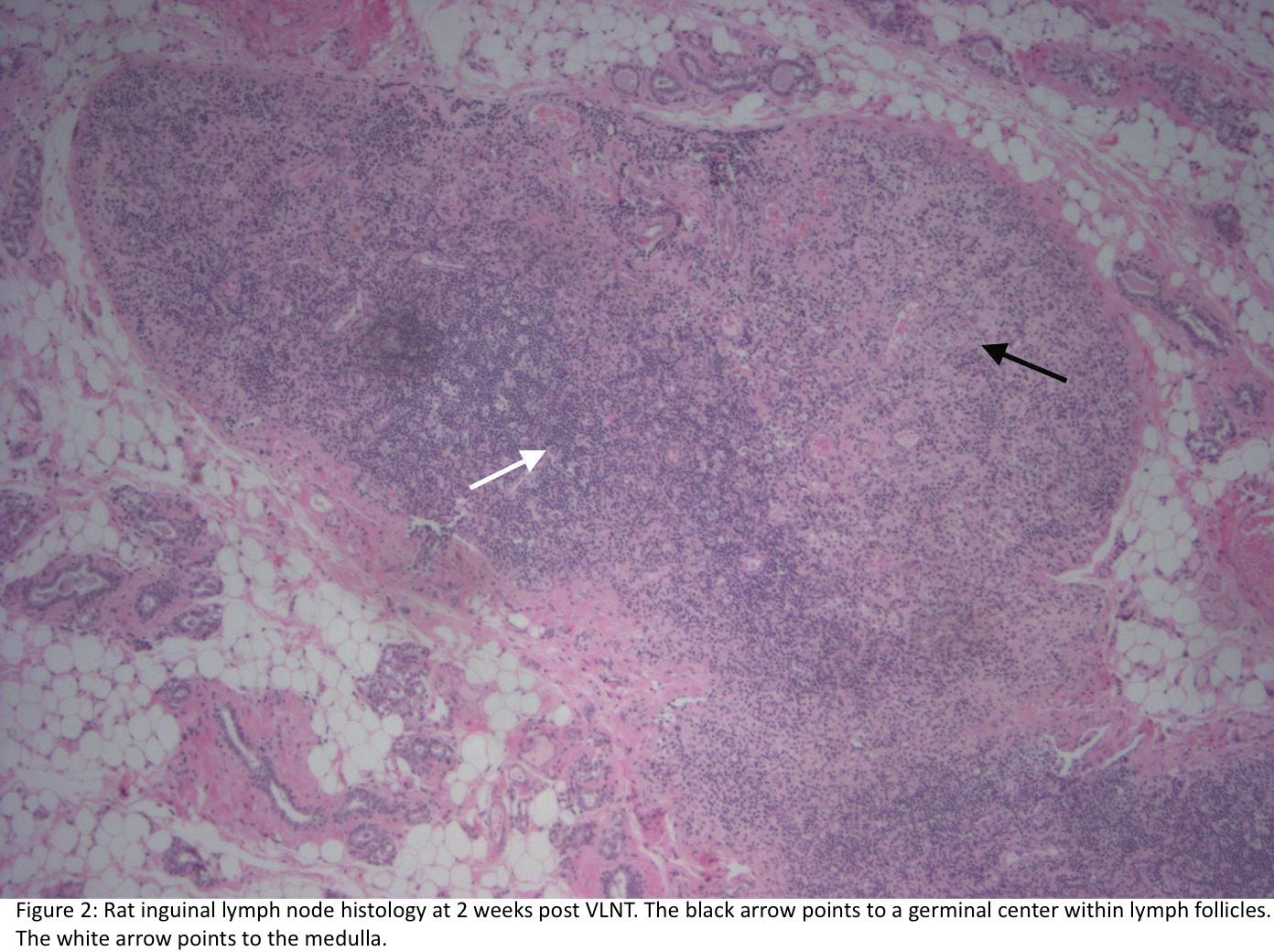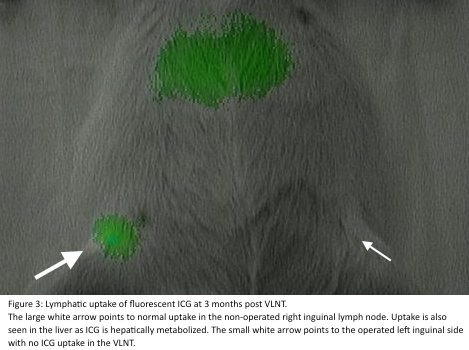Back to 2015 Annual Meeting
Feasibility and Viability of Vascularized Lymph Node Transfers in a Rat Model
Marc Najjar, M.D., Naikhoba Munabi, M.D., Yelena Akelina, D.V.M., Jeffrey A. Ascherman, M.D..
Columbia University Medical Center, New York Presbytarian Hospital, New York, NY, USA.
Title: Feasibility and Viability of Vascularized Lymph Node Transfers in a Rat Model
Background:
Vascularized lymph node transfer (VLNT) has recently received attention as a potential surgical treatment for lymphedema. Despite good results in some series, the real benefits of VLNT are difficult to ascertain due to the limited number of patients who have undergone the procedure. In order to scientifically investigate the feasibility, viability and limitations of VLNT, we are using rats as an animal model to study VLNT. The aims of the current study are threefold: 1) determine the technical feasibility of VLNT in a rat, 2) determine the viability of the transferred nodes over time, and 3) assess the re-establishment of disrupted lymphatic channels after VLNT.
Methods:
To study the technical feasibility of VLNT in the lower extremity of Sprague-Dawley rats, we are performing end-to-end microvascular anastomoses of superficial epigastric vessels on which the groin lymph node basin has been harvested as a free flap (Figure 1). We then investigate the viability of transferred lymph nodes as well as assess for the re-establishment of lymphatic channels in the transplanted node basin. Anastomosis patency is assessed visually and with a microvascular flow probe at 1 hour and 2 weeks postop. Rats are sacrificed at 2 weeks postop and lymph node viability assessed through histological examination. In addition, one rat has been followed for three months postop, and reestablishment of severed lymphatic channels has been assessed non-invasively through examination with fluorescent indocyanine green (ICG).
Results:
VLNT was performed in 4 rats to date (and results of additional planned VLNTs will be reported at the time of the meeting). Anastomoses were patent in all 4 rats at 1 hour postop but only 3 survived the initial postop period. Two rats were sacrificed at 2 weeks postop, and transplanted lymph nodes were shown to be viable on H and E staining (Figure 2). In one rat with 3 months follow-up, there has been no ICG uptake in the transplanted inguinal lymph nodes, indicating a lack of lymphatic channel reestablishment in the transplanted node basin (Figure 3).
Conclusions:
VLNT can be successfully performed in the rat model. The procedure is technically feasible, and postop histologic studies show the transferred nodes to be viable. Additional studies are required to determine if lymphatic channels are re-established in the transferred node basins.
  
Back to 2015 Annual Meeting
|




